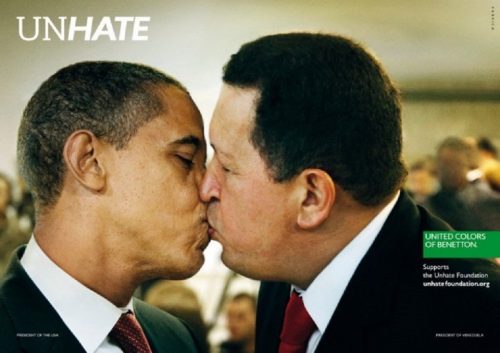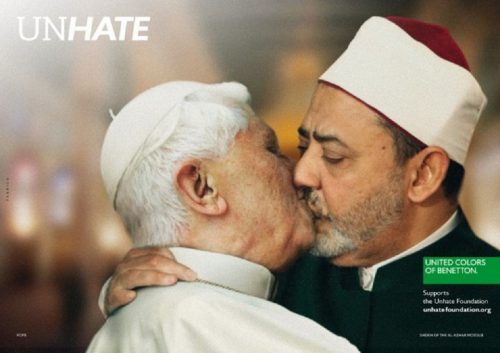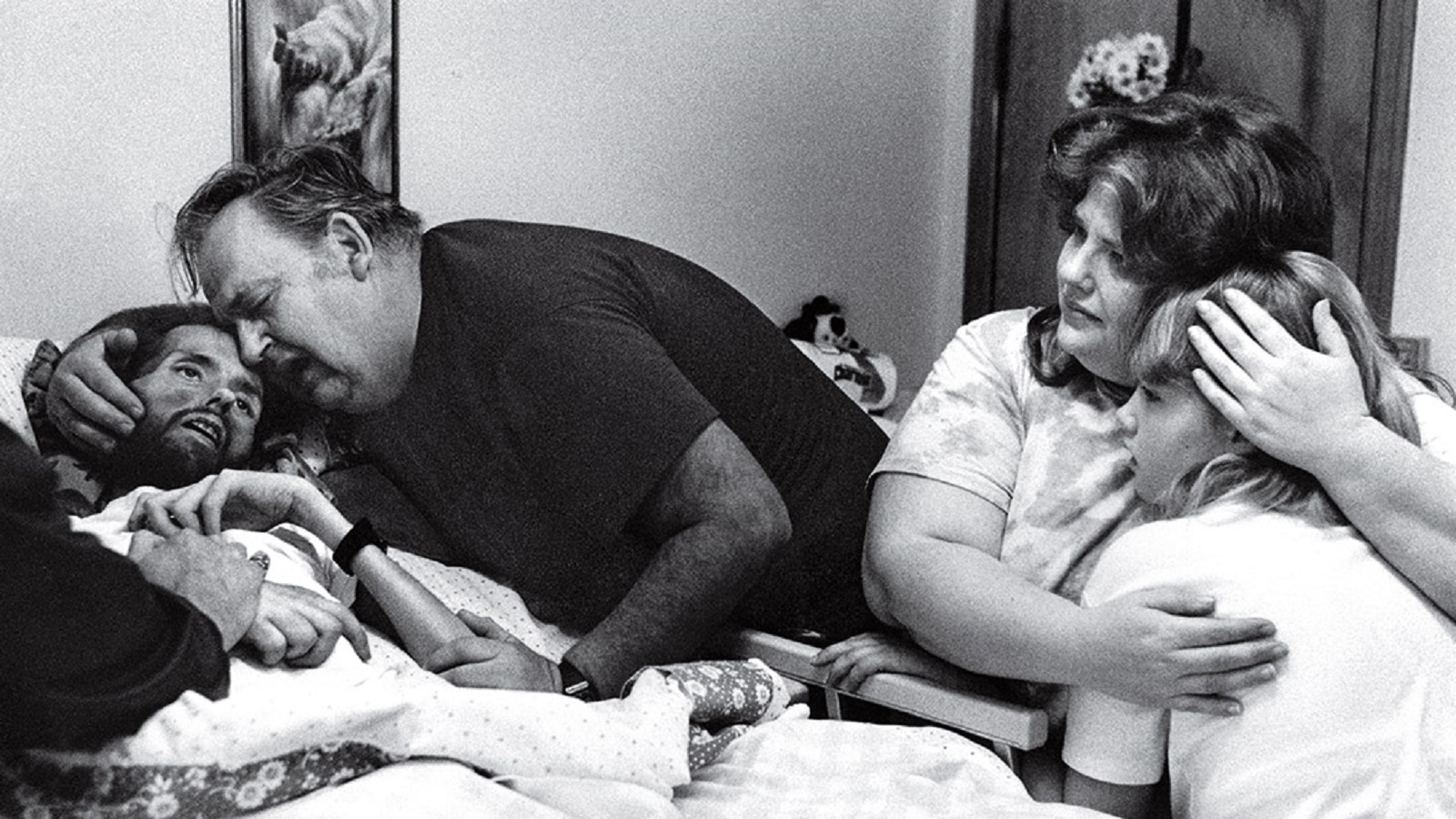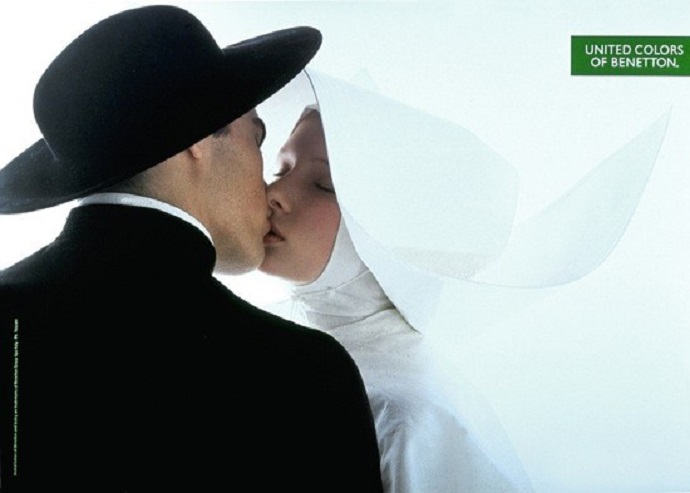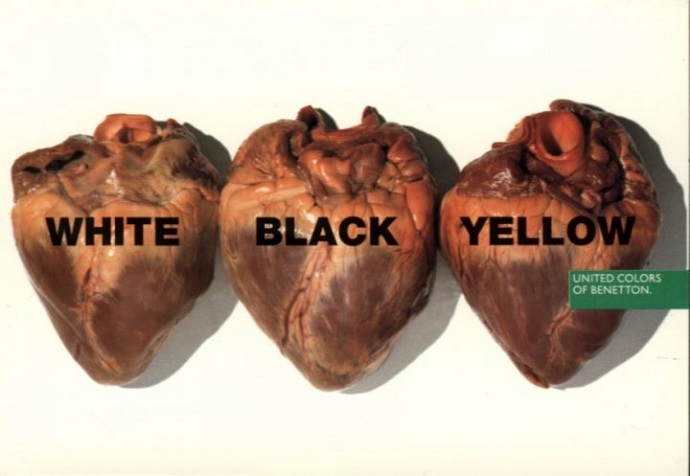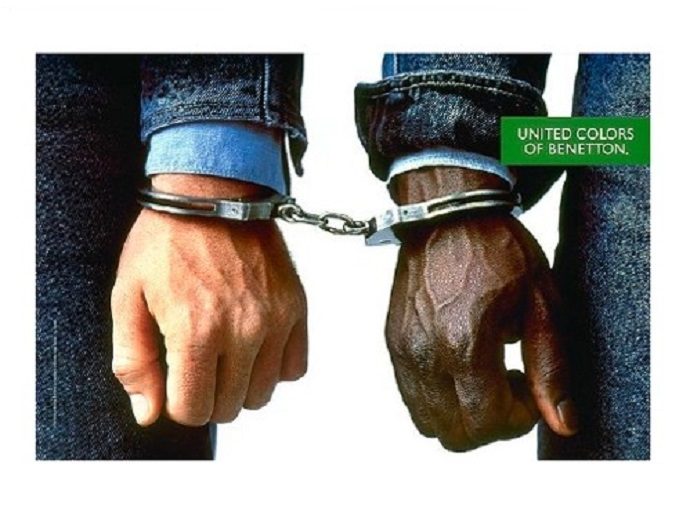This week’s #ThrowBrandThurstay takes us back 25 years ago when AIDS infection became the number one cause of mortality among men between 25 – 44 years of age. Discovered in the early 1980s, the disease, originally labelled as “The Gay Plague”, stigmatized the homosexual males. At that time, the US government didn’t want to have anything to do with the gay community, so the illness was considered unworthy of serious medical attention.
It was during the spring of 1990 when gay activist David Kirby died because of AIDS. With his family by his side, the 32-year-old man passed away and this emotional moment was captured by a young journalist, Therese Frare, in an image that was published in the LIFE magazine. The photo known as “The Face of AIDS” quickly became a symbol of the deadly illness that killed millions of people, and left many families devastated by the loss of their loved ones.
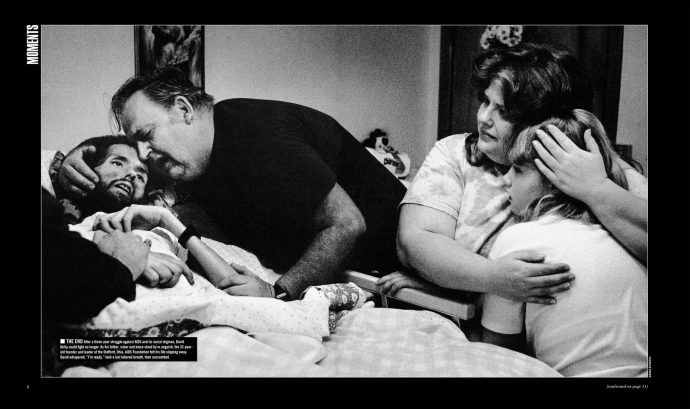
The picture that brought Therese the 2nd prize at World Press Photo somehow inspired the decision of Italian clothing brand Benetton to raise awareness of AIDS. After Kirby’s family and the young journalist’s approval, the clothing company used the image in an ad campaign that shocked the world in 1992.
Oliviero Toscani, Benetton’s Creative Director at that time, saw the true value of the picture, but he considered the image’s lack of colors to be a huge problem. Inspired by the fact that colors give a more realistic touch to a picture, Toscani contacted Tibor Kalman, Editor in Chief of Benetton’s COLORS magazines, who called in the colorist Ann Rhoney to paint the haunting scene. “The whole idea of coloring it was to make it look realistic, so there was a lot of pressure to deliver that,” said the colorist.
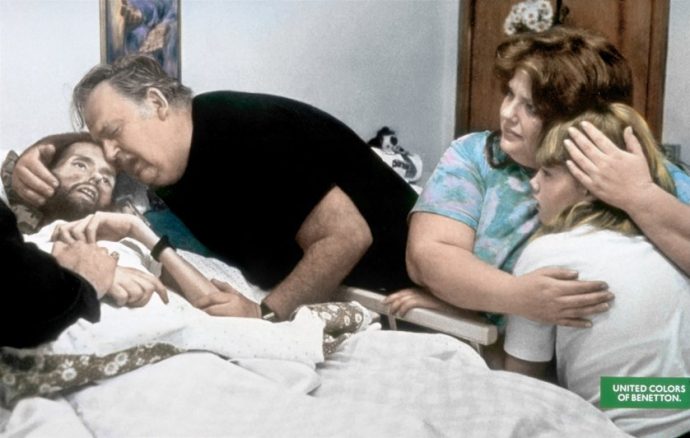
“When I saw Therese’s image in LIFE [magazine], I said: ‘That’s the picture’. [David] looks like Jesus Christ but he’s dying of AIDS. It’s like a painting,” declared Toscani when talking about Frare’s moving photo. The Catholic Church was irritated by the picture and considered it inappropriate. The Church thought that the brand was mocking the historical image of Virgin Mary holding Jesus Christ in her arms, following his crucifixion.
The former creative director believed his role was to create advertising campaigns inspired by mankind’s real problems, issues that other advertisers wouldn’t have the courage to approach, mainly because they want to avoid the public’s negative reviews.
Provocative enough, the heartbreaking image, which included the Benetton logo, enraged both AIDS and gay activists, who called for a boycott of the brand. They were furious about the fact that the company used death and grief to sell its garments.
Therese Frare’s image and Benetton’s ad made people see the real truth about AIDS, at a time when there were no new drugs to battle the disease. Kirby’s family felt this was their opportunity to make people aware of the deadly disease. “Benetton didn’t use us, or exploit us. We used them. Because of them, [Therese’s] photo was seen all over the world, and that’s exactly what David wanted,” concluded Bill Kirby, the activist’s father.
The “United Colors of Benetton” slogan describes the multiracial face of the Italian clothing brand, which has gained a reputation for delivering shocking ads since the 1980s. Take a look at a selection of some of the most intriguing Benetton ads below:
